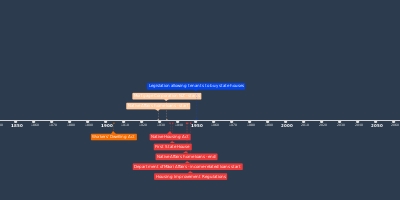16 май 2013 г. - Social Housing Reform
Описание:
As part of the 2013 Budget, the Government announced major reforms to the provision of social housing. These included:Extending Income-Related Rent Subsidies to approved community providers
• Income related rent subsidies were to be phased in for approved community housing providers to create more flexible and innovative solutions to social housing needs. Income related rent subsidies had previously only been available to state (Housing New Zealand Corporation (HNZC))) tenants. The change was designed to give those in need of housing support, the best opportunity to find a solution that was most suitable to them. It also recognised that community providers often did a more comprehensive job of assessing the complex needs of families and individuals, beyond just housing.
A more comprehensive housing needs assessment
• It was announced that the assessment of people’s housing needs was to be shifted away from housing providers. From 14 April 2014, the housing needs assessment would be undertaken by the Ministry of Social Development. This was to allow for an independent assessment of a person for family’s housing needs as part of a more comprehensive assessment of their social support needs. Separating the assessment function from the housing provider was also intended to create a more level playing field between HNZC and community housing providers.
Reviewable tenancies for all social housing tenants
• The policy of reviewable tenancies which had applied to new HNZC tenants since 1 July 2011, was to be extended to all social housing tenants, including those who live in community housing supported by the income-related rent subsidy. For those whose circumstances had not changed they would remain in subsidised social housing. If it was found that a tenant’s need for social housing had reduced, they would be placed into more suitable accommodation or helped to obtain independent housing. Reviews were designed to ensure that social housing was focused on housing people with the highest housing need for the duration of that need. The new policy of reviews was to be phased in from 2014.
Regulation of Community Housing Organisations
• It was announced that there would be a regulatory agency responsible for approving community housing providers who could access the income-related rent subsidy for new tenants. The regulatory framework was intended to ensure protection of government’s investment in social housing, as well as the health and safety of social housing tenants.
Housing Warrant of Fitness system to be developed and trialled
• With a focus on health, safety and welfare of tenants the government announced plans to develop and trial a housing warrant of fitness for social housing. The housing Warrant of Fitness (WoF) would initially apply to the 69,000 properties owned or managed by HNZC. It was intended that the WoF would then be extended to other social housing providers and potentially to other rental properties where the government was providing a subsidy. The new standard was to ensure that tenants could live in warm, dry, safe and healthy homes. It was one of the recommendations of the Expert Advisory Committee on Solutions to Child Poverty.
Simply Smart Homes Infill Project
• It was announced that HNZC would be building 500 two-bedroom homes over the next two years to meet the demand for smaller state housing. These would be built in Auckland, Wellington and Christchurch, where demand was greatest. They were to be built on existing HNZC properties that had sections big enough for another house. The houses were to be 60 square meters and designed to house single people with caregivers, sole parents and small families. The existing houses on the sections would be upgraded at the same time.
Project 324&5
• This project was designed to convert three-bedroom state houses into four and five bedroom homes. It recognised that HNZC, particularly in Auckland, had an oversupply of three-bedroom homes and a real shortage of larger homes. The project was intended to add 3,000 bedrooms (by adding one or two bedrooms to 2,000 state houses) over the following two years. Around three-quarters of the new bedrooms would be in Auckland.
In December 2014, the Government announced that the Simply Smart Homes Infill Project and Project 324&5 were to be discontinued in 2015, by which time it was expected that just 122 new two-bedroom homes would have been built and 274 new bedrooms added. The proposed Auckland Unitary Plan and the introduction of Special Housing Areas had shifted to the focus to the land holdings of Housing New Zealand Corporation and redevelopment opportunities.
The Social Housing Reform Programme had commenced in 2010 with the appointment of the Housing Shareholders Advisory Group to review the social housing sector and make recommendations for reform.
Source: https://www.msd.govt.nz/about-msd-and-our-work/about-msd/history/social-assistance-chronology-programme-history.html
Добавлено на ленту времени:
Дата:
16 май 2013 г.
Сейчас
~ 12 г назад
